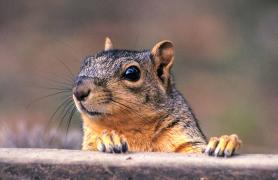Body
- To reach their wintering grounds in the rainforests of South America, blackpoll warblers fly up to 1,800 miles over the Atlantic Ocean. During this time, the marathon migrators often fly for three days straight without resting.
- During fall, blue jays may collect and bury up to 5,000 acorns each. The feathered foresters forget to eat some of the acorns, and many sprout into oak trees the following spring.
- Pied-billed grebes eat their own feathers. Why? The feathers pile up in a grebe’s stomach and act as a filter to keep pokey prey parts — such as crayfish claws and fish spines — from piercing the bird’s intestines.
- Black walnut trees engage in chemical warfare to keep other plants from competing with them for sunlight, water, and nutrients. The toxic trees release a chemical called juglone that kills some plants and slows the growth of others.
- When a predator threatens a marbled salamander, the chunky, 4-inch-long amphibian secretes a milky poison from its tail. Biologists believe the toxic tail is enough to keep many predators from taking a nibble.
- In the fall, beavers collect up to 2,000 pounds of tasty, tender branches and stash them in the mud in the deepest part of their pool.
- When winter comes, hungry beavers swim under the ice to grab a stick for a snack.
- Spiders don’t have wings, but that doesn’t mean they can’t fly. To move long distances, spiders climb a tall perch and let out strands of silk. When the silk catches the wind, the spider lets go and up, up, and away it flies.
Also In This Issue
Media

Body
Seven kinds of squirrels scamper across the Show-Me State.
Media

Body
Think you’ve got what it takes to stay safe in the wild?
And More...
This Issue's Staff
Bonnie Chasteen
Les Fortenberry
Karen Hudson
Angie Daly Morfeld
Noppadol Paothong
Marci Porter
Mark Raithel
Laura Scheuler
Matt Seek
David Stonner
Nichole LeClair Terrill
Stephanie Thurber
Cliff White
Les Fortenberry
Karen Hudson
Angie Daly Morfeld
Noppadol Paothong
Marci Porter
Mark Raithel
Laura Scheuler
Matt Seek
David Stonner
Nichole LeClair Terrill
Stephanie Thurber
Cliff White






















